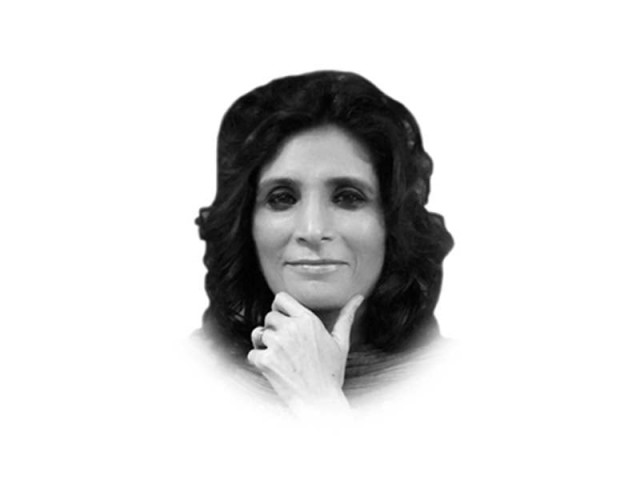The scars will not go away
Bomb blasts and oil blasts may be causing equal damage but evoke a different response

The writer is a consultant, coach, analyst and a politician and can be reached at andleeb.abbas1@gmail.com.
She tweets at @AndleebAbbas
This accident came after the terrible bomb blasts in Parachinar, Quetta and Karachi that also took hundreds of innocent lives a few days before Eid celebrations. Bomb blasts and oil blasts may be causing equal damage but evoke a different response. While the prime minister shortened his tour to the UK and came rushing back to Bahawalpur to visit the burn victims, the victims of the bomb blasts in Parachinar were left for the COAS and the army to deal with. While the bomb blasts have a specified National Action Plan to go back to, the oil blasts and many other accidents have absolutely no plan to go back to.
Every day hundreds die in Pakistan’s streets — in accidents, in fires, in gun assaults and fights. These are just treated as part of living in an underdeveloped country. Road safety, building safety and human safety are reserved for developed nations and thus the reaction of the government in declaring that the oil blast was due to the ignorance of the people playing with fire is understandable but not acceptable. Laws do exist to prevent, deal and minimise damage and law enforcement is what governance and government is all about. In fact, the responsibility of the government in countries that have low literacy rates is even higher and that is why the scale of this category of tragedy maybe the biggest till date but it will soon be overtaken by another one — if it is treated as business as usual.

Michael Kugelman, deputy director of the Asia Programme and South Asia senior associate at the Wilson Centre, says that “the Bahawalpur tragedy amplifies how it’s not just terror that causes mass casualties. Misgovernance can have very deadly effects.” This accident was a collapse of the so-called emergency system at different levels. At the personal, local, district and national levels, the fragility and negligibility of human life was evident all the way through. The fact that a human body is worth more dead than alive just sends shivers up the spine. If each victim is worth Rs2 million and you multiply that with the total number of victims, one can safely say that a burn unit could be built for the same sum of money — a move that could save scores of lives.
Punjab has a population of 120 million people — more than many countries put together. There are 23 teaching hospitals and 36 district hospitals but only six burn units in them of which just four are fully functional in Lahore, Multan, Rawalpindi and Faisalabad. There are only three specialised dedicated Burn Centers in Pakistan mainly run by the military. It is thus no surprise that we have missed all Sustainable Development Goals. This was inevitable given the apathy of the government towards public health. Currently, Pakistan is spending 0.42% on healthcare services which is the lowest in the region. Stats speak of a health tragedy, ie, one hospital bed to 1,000 people and one doctor to a population ratio of 1:1127. Yes, we do have a resource constraint but then all the more is needed for spending on people first.
Spending Rs265 billion on a fancy train which could easily be spent on making 10 burn units plus 10 cancer hospitals and provide free emergency treatment to the majority of the population is what any sane governance policy would ensure. However the focus is wrong and the results are disastrous.
The fact that the police did not arrive till 45 minutes after the spill, the area was not cordoned off, the local mosque announced and invited people to come for the spilled oil, the fire brigade appeared way too late, the district hospitals were devoid of facilities, the few ambulances had to pack the dead and the injured together, is just an endless tale of trauma that will haunt us till a bigger accident happens.
Blaming the public for being careless is also ironic considering that 50% Pakistanis can still not sign their own names and are dependent on local mosques for getting information and direction in their lives. Therein breeds the germs for terrorism, for a lack of information to know their rights, to fight for their rights, giving power to the local religious leader, local police and establishment to enslave them mentally and physically to their command. That is why the Parachinar incident has exposed the workings of sectarian exploiters in trying to exploit the barren brains of people who have been deliberately deprived of education and exposure.
While Parachinar reminds us about Fata reforms, Bahawalpur reminds us of education reforms, health reforms, police reforms, civil service reforms. Till that happens the sight of the remains of the burnt motorcycles and the remains of the charred bodies lying side by side in equal disdain will haunt us forever.
Published in The Express Tribune, July 2nd, 2017.
Like Opinion & Editorial on Facebook, follow @ETOpEd on Twitter to receive all updates on all our daily pieces.















COMMENTS
Comments are moderated and generally will be posted if they are on-topic and not abusive.
For more information, please see our Comments FAQ